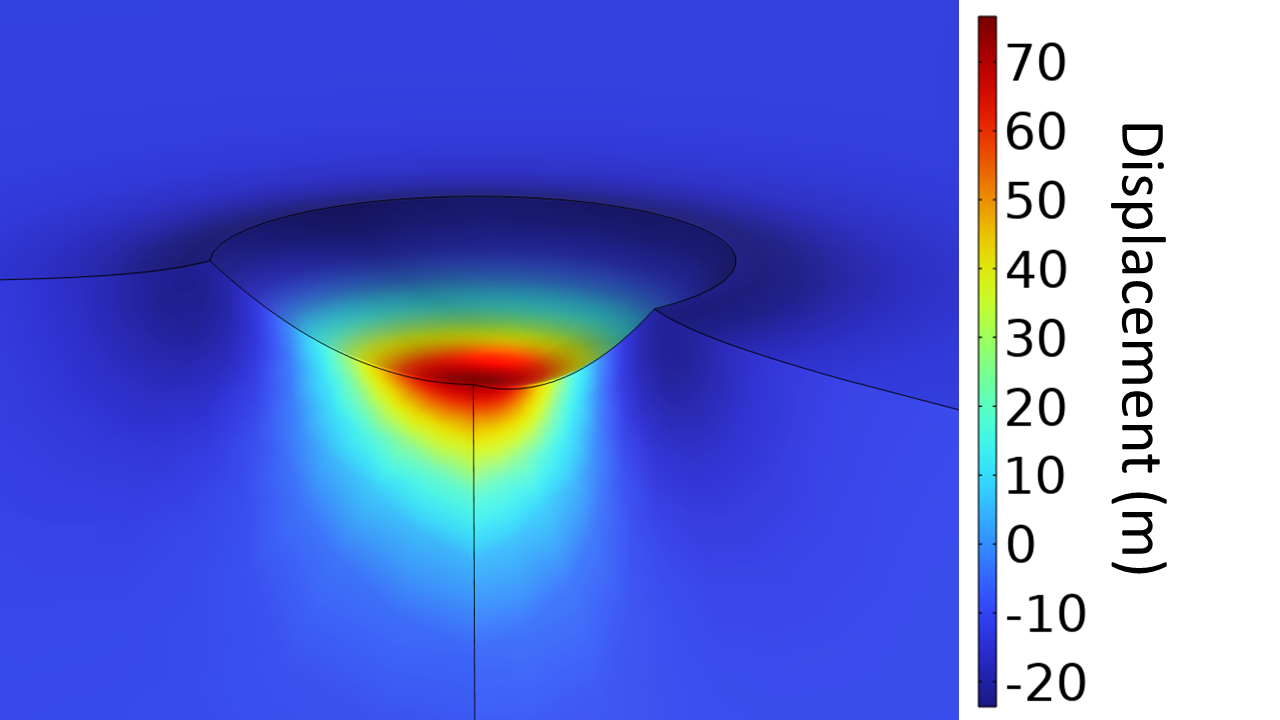
I study fluid flow and surface-interior interactions on Earth and planetary bodies. The “fluid” can be the ductile interior of solid bodies, glaciers scarping across the landscape, molten rock flowing above or below the surface, and rivers responding to topography. I use numerical models and spacecraft data to understand how planetary surfaces evolve and deform through time and constrain their geologic properties. I also study fluid flow to help potentially predict and mitigate geologic hazards such as flooding risks and volcanic activity.
Ceres
Ceres is the largest object in the asteroid belt and the closest icy body to the sun. Because of this, it is easily accessible and has a warm surface. The warm ice in the subsurface can therefore flow over billions of years. I use the finite element method (FEM) to simulate viscous relaxation of craters on Ceres and constrain the ice content of the crust. I compare the simulation results to observations and detailed topographic analysis to elucidate the interior of our closest icy neighbor. While the crustal ice flows as a fluid, it moves very slowly due to the non-ice impurities. The picture below shows the subtle deformation that occurred on a 12 km diameter crater over 1 billion years.

Because Ceres is the closest icy body to the sun, insolation (or sunlight) can drive topographic evolution. Large craters will have cold, poleward facing walls and warm, equatorward facing walls. The difference in temperature may lead to the equatorward facing wall viscously relaxing more resulting in asymmetric crater walls. I model large craters on Ceres to try to reproduce wall slope measurements made from detailed topographic measurements.
Callisto

Callisto is thought to be the only Galilean moon that is not fully differentiated (or stratified into different material layers). This internal structure of the large icy moon comes from the high moment of inertia measured by NASA’s Galileo spacecraft. Another way to explain the high moment of inertia could be from an outer, undifferentiated ice shell that did not melt after accretion with the rest of the interior (this structure has been proposed for KBOs and the Uranian moons). I simulate the evolution of Callisto’s cratered landscape assuming this outer, undifferentiated shell structure to test its plausibility.
Earth
As an undergraduate researcher, I helped to develop an automated floodplain mapping algorithm. Previously established algorithms utilized the topography of the entire watershed to determine thresholds that would be used to mark areas as floodplain or not floodplain. The algorithm I worked on utilized local topography to mark regions as part of the floodplain or not. The algorithm, while fully automated, can be tuned by different users to map different river flat features (such as terraces).
